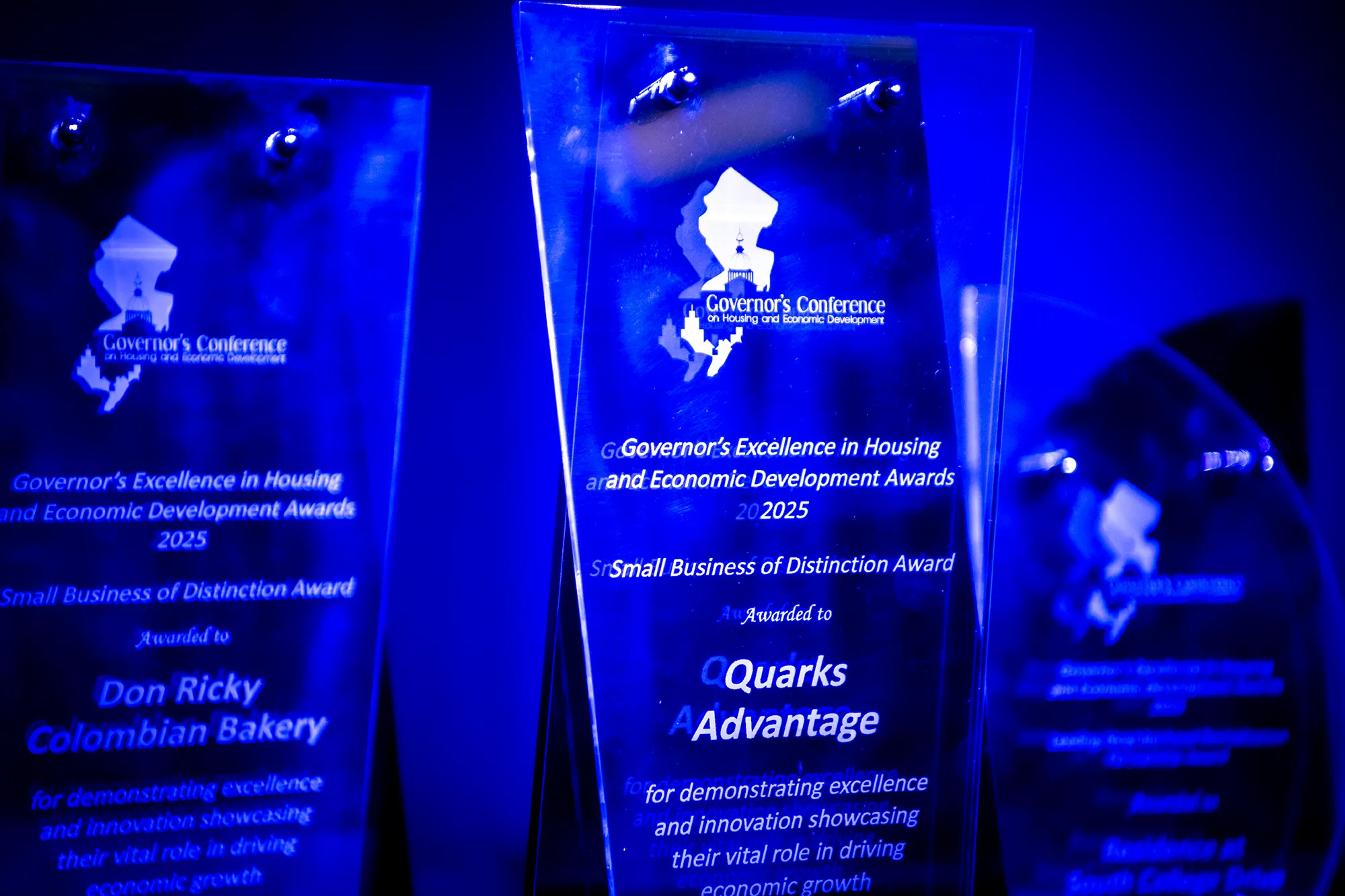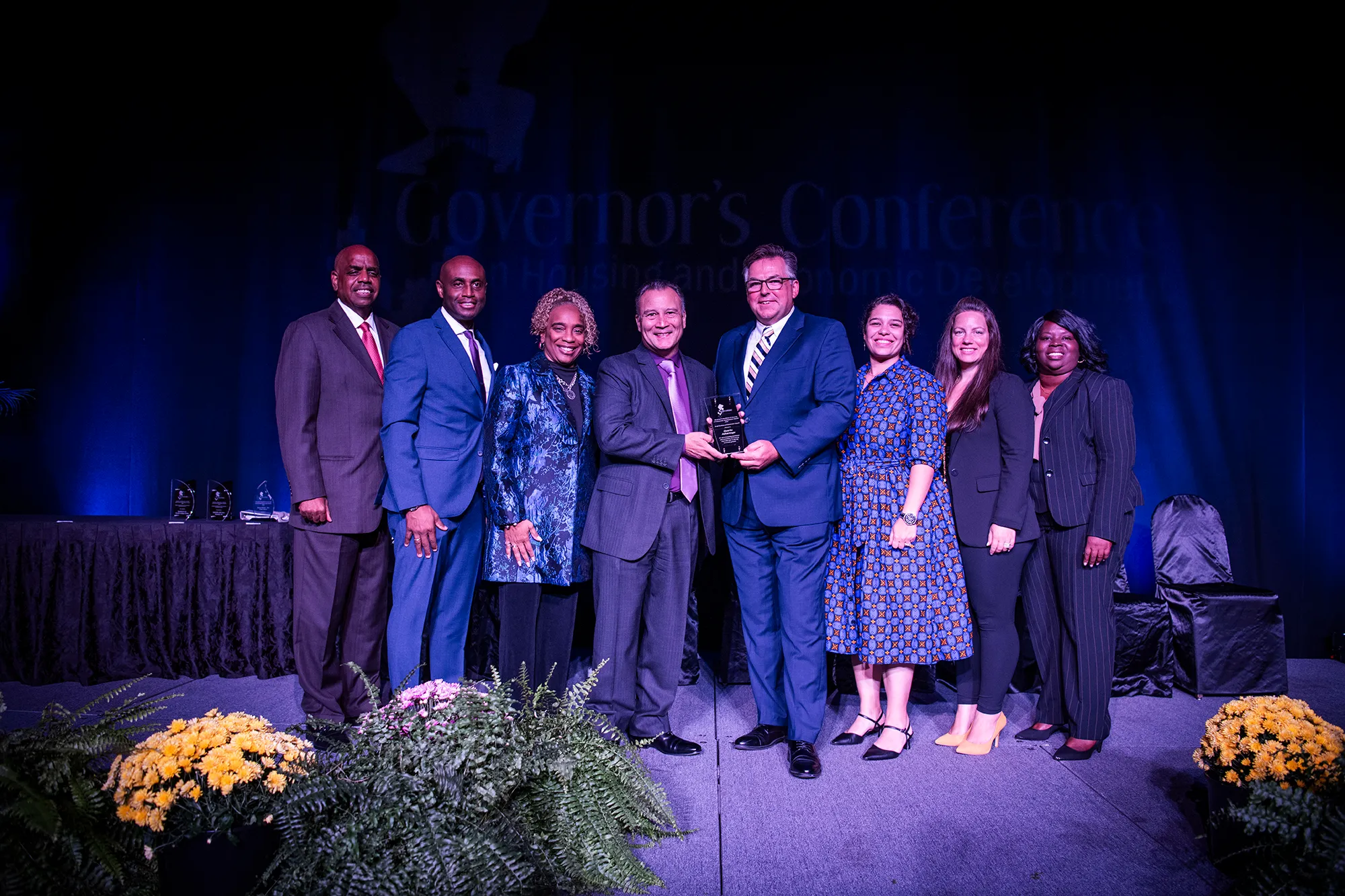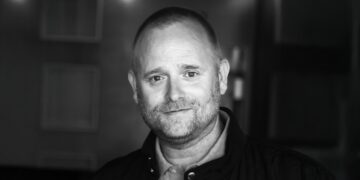Most business conferences feel the same after a while. Badges, handshakes, booths that blur together. But every now and then, something cuts through the routine and reminds observers why people actually show up to these things. It’s not usually the presentations or the panels. It’s the moments in between, when someone reveals who they really are when the spotlight isn’t on them.
On day one of New Jersey’s Governor’s Conference on Housing and Economic Development, most exhibitors set up standard displays with brochures, banners, the usual conference fare. Then there was the Quarks Advantage booth, positioned just outside the main ballroom with a large LED screen cycling through research domains that didn’t quite fit the typical small business profile: Artificial Intelligence, Clean Energy, New Materials, Biotechnology, Quantum Computing, Quantum Telecommunications.
Dr. José Gabriel Carrasco Ramírez, the company’s CEO, stood near the booth greeting passersby. His ten-year-old twin daughters hovered nearby, curious and attentive, watching the networking unfold like they were learning a second language. It was an unexpected scene for a business conference. The question hung in the air: could this startup really be what it claimed?
Carrasco spent much of that first day walking the expo floor with his daughters, stopping at nearly every exhibit to ask questions and exchange ideas with other entrepreneurs.
The next day brought clarity. At the Governor’s Conference awards brunch, Quarks Advantage was called to the stage to receive the Small Business Distinction Award. The room’s energy shifted from policy discussions to something more personal, a conversation about persistence, innovation, and what it actually takes to build something meaningful.

“We are innovators. We are making new and different things that can impact the real world,” Carrasco said in his acceptance video. “This award inspires us to try, and try, and try, and to teach others to try, to try, to try. Our business grows stronger when we share knowledge with other entrepreneurs, giving them the advice they need to succeed, and making Jersey City and all New Jersey a better place to live, to work, and to prosper.”
His family joined him for the official photos. His children stayed close. His wife stood just off to the side with the kind of smile that knows the weight of every late night that led to this moment.
A young woman made her way through the crowd straight to Carrasco. “You’re a family guy,” she told him. “I know it because my dad was too.”
It was a brief exchange, but it landed. Carrasco mentioned later that he’s been working since he was 15, through restarts, risks, and reinventions, and that family has always been the reason, not an afterthought.
Here’s where most award stories would end. But when the ceremony wrapped and attendees filed out of the ballroom, Carrasco didn’t stop to celebrate. He nodded to his team and headed down a corridor toward a quiet meeting room, where a working videoconference with more than two dozen Hackathon Raptors partners was already queued up.
In the expo hall, exhibitors were breaking down their booths. Down the corridor, the meeting room door clicked shut and the screens came to life.

Hackathon Raptors isn’t a typical weekend coding competition. Based in London, it’s built a globally connected community with 1,600+ registrations across multiple events and a Discord server hosting 550+ active members from more than 30 countries. Participants include people from Google, Microsoft, Amazon, Meta, NVIDIA, Tesla, and Zoom. The draw isn’t prize money. It’s purpose.
Carrasco came to the videoconference with an idea, not slides. On a whiteboard, he sketched out State-Parallel Computing (SPC), a computing approach where correctness doesn’t wait until after execution but emerges from governed physical evolution itself. In his explanation, results aren’t just outputs; they’re attractors in a system constrained to behave in ways the real world will accept.
No jargon barrage. No grandstanding. Just a patient walk-through: state manifolds, feasibility masks, governed evolution, and a compilation-iteration-projection-recovery cycle that turns theory into practice.
He broke down the real-world applications simply: “Robotics: treat motion as an attractor. Robots settle into safe grasps and recover balance by design.” “Augmented reality: bind graphics to governed physical state. Anchors don’t drift and interactions stay plausible.” “Drug discovery: steer molecules toward feasible minima. Chemistry-valid, synthesizable candidates faster.”
The questions that followed were sharp. What does “governed” look like in hardware? How do you enforce feasibility without collapsing performance? Where does this fit into existing technology stacks? Carrasco didn’t promise a miracle. He mapped a road.
New Jersey’s innovation story gets told through labs, accelerators, and university partnerships. But the real engine runs on connections like these: a conference celebrating small businesses, a family at the edge of a stage, and a Jersey City startup plugging into a London-based community to build something genuinely new. Hackathon Raptors has become a convening force, community-driven, socially minded, execution-oriented. Quarks Advantage brings technical expertise forged locally. Together they represent a simple equation: local roots, global reach.
When the videoconference ended, Carrasco’s kids drifted back into the room, checking the diagrams on the whiteboard, catching the energy, asking what comes next.
Covering enough business events reveals the difference between performance and reality. The performance is polished. It knows what to say, when to smile, how to work a room. Reality is quieter but more deliberate. It brings family to a conference not because circumstances demand it, but because that’s what matters.
José Gabriel Carrasco Ramírez gets that. His daughters were there for the booth setup, the floor walk, the award, and the technical discussion that followed. Not as props or photo ops, but as part of the equation. They saw their father work, connect, win, and immediately get back to solving problems.
Maybe that’s what innovation actually looks like when the buzzwords get stripped away. It’s not choosing between family and ambition. It’s refusing to see them as separate things in the first place. Build something that matters, bring the people who matter along, and keep moving.
That’s what stuck from that night at the Governor’s Conference. Not the award itself, but what happened around it and after it. The work that doesn’t pause for applause.



































